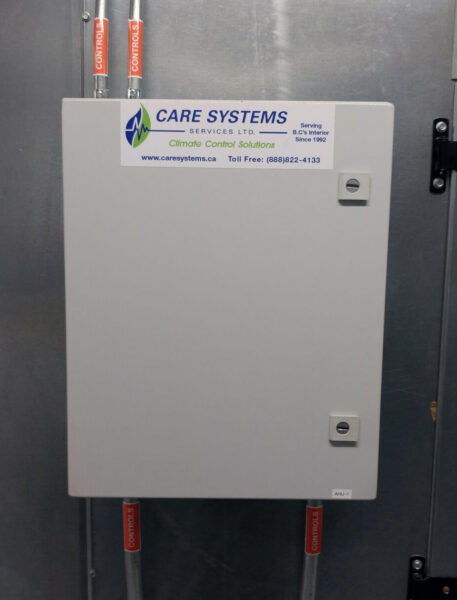One of our goals at Care Systems is to help the community better understand the benefits of quality maintenance and building automation, here are a few answers to the questions we receive. If you have a question not answered below please feel free to contact us here.
BAS stands for Building Automation System which uses a network of actuators, relays and controllers to unify and control equipment around a building such as the lighting, security and heating and cooling systems. Here at Care Systems we use Automated Logic Corporation’s automation system which includes their WebCTRL user interface.
IAQ stands for Indoor Air Quality and is a term used when describing how clean the air within a building is. The fewer particulates and volatile gases found in the air the cleaner it is and the cleaner the air the higher quality it is. Indoor Air Quality sensors are available for purchase and can be used to monitor the air within your building to ensure the health and safety of your occupants.
The easiest way to improve the quality of air inside your building is through regular maintenance. Having outdoor air dampers checked, air filters replaced and ducts cleaned at regular intervals will help promote air movement and prevent air from becoming stagnant. Having indoor air quality sensors such as CO2 or volatile gas sensors integrated to your BMS can allow the system to automatically adjust it’s settings to reduce contaminants and even sound an alarm.
ASHRAE (American Society of Heating, Refrigerating and Air Conditioning Engineers) defines acceptable indoor CO2 levels at around 1000 - 1200 ppm (parts per million) in an office building, however, Care Systems suggests between 500-600 ppm to ensure your occupants are comfortable.
The effects of increased CO2 levels on adults at good health can be summarized:
- normal outdoor level: 350 - 450 ppm
- acceptable levels: < 600 ppm
- complaints of stiffness and odors: 600 - 1000 ppm
- ASHRAE and OSHA standards: 1000 ppm, general drowsiness: 1000 - 2500 ppm
- adverse health effects expected: 2500 - 5000 ppm
- maximum allowed concentration within a 8 hour working period: 5000 ppm
If office employees are experiencing the above mentioned symptoms, CO2 monitors can be installed and alarm when high CO2 levels have been detected. These sensors can also be included in automation systems to automatically modulate the amount of outside air that is brought into the building and prevent any build up of CO2.
CSA and ASHRAE both agree that most people will find between 24.5°C to 28°C comfortable in the summer and 20.5°C to 25.5°C in the Winter. That is while wearing light clothing in the summer and warm clothing in the winter and both with a relative humidity of 30%. If you’re in a region with a higher level of humidity, then slightly cooler temperatures may be welcomed.
The easiest way to begin lowering your utility bills is to simply only use equipment when it is needed. Strategies such as installing occupancy sensors on lights and scheduling mechanical systems off at night help reduce unnecessary usage and decrease energy bills.
